
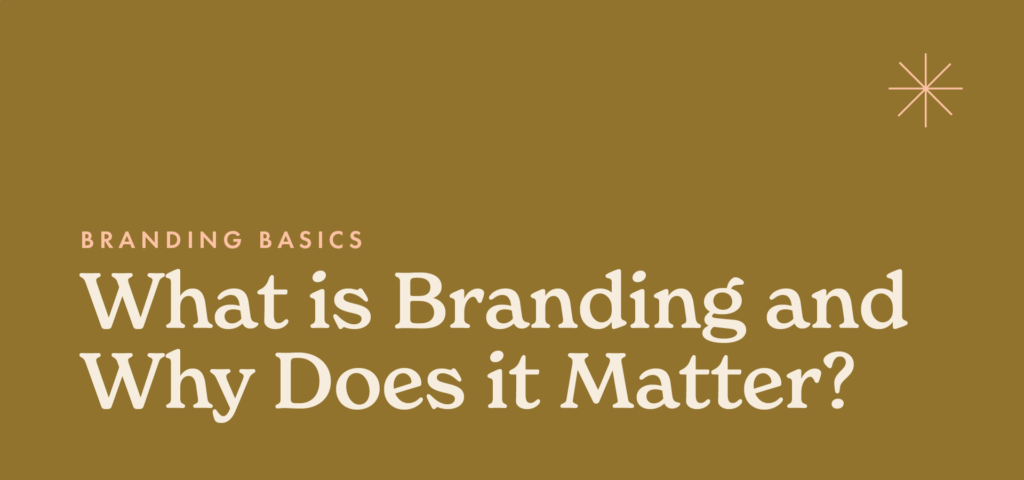
The word “branding” is tossed around all the time in today’s world. We hear it when Kylie Jenner’s latest venture pops off, when Target launches a new campaign, or when Google tweaks its familiar logo. But as terms like “brand persona” and “brand identity” enter the mix, things can get fuzzy. What do these terms really mean, and how are they different from each other?
Today we’ll give you the clarity you need so you can confidently start your next big idea.
Why does branding matter?
Before we jump into the specific definitions of everything, let’s establish why it matters.
1. Branding HELPS YOU STAND OUT
The main function of a brand is that it helps you stand out from your competitors. It’s a distinct mark or name that quickly sets you apart, both making a good first impression while also continuing to build a relationship with your customers.
2. Branding CREATES A CONSISTENT EXPERIENCE
It’s no surprise in today’s chaotic world, that we enjoy consistent, reliable experiences that we can count on. In fact, they’ve found that consistent presentation of a brand has seen to increase revenue by 33%.
When you have a good brand that’s clearly defined, you can create consistent experiences with your customers whether they’re at your physical shop, online, or scrolling through social media. Over time, consistent experiences turn into memorable moments that your customers will rave about for years and years to come.
3. Branding BUILDS CUSTOMER RELATIONSHIPS
Without a unique brand, you may never get the attention of your ideal customer, but with a brand you can instantly relate to your customer starting a relationship built on trust that will only continue to result in returning sales. In fact, 81% of consumers said that they need to be able to trust the brand in order to buy from them.
4. Branding GIVES EMPLOYEEs PRIDE
A brand doesn’t just help you connect with your customers, it lets you share in a common mission with your employees as you work towards the same goal. As they help you build your business towards the goal, they’ll establish a strong sense of pride in the work they’re doing.
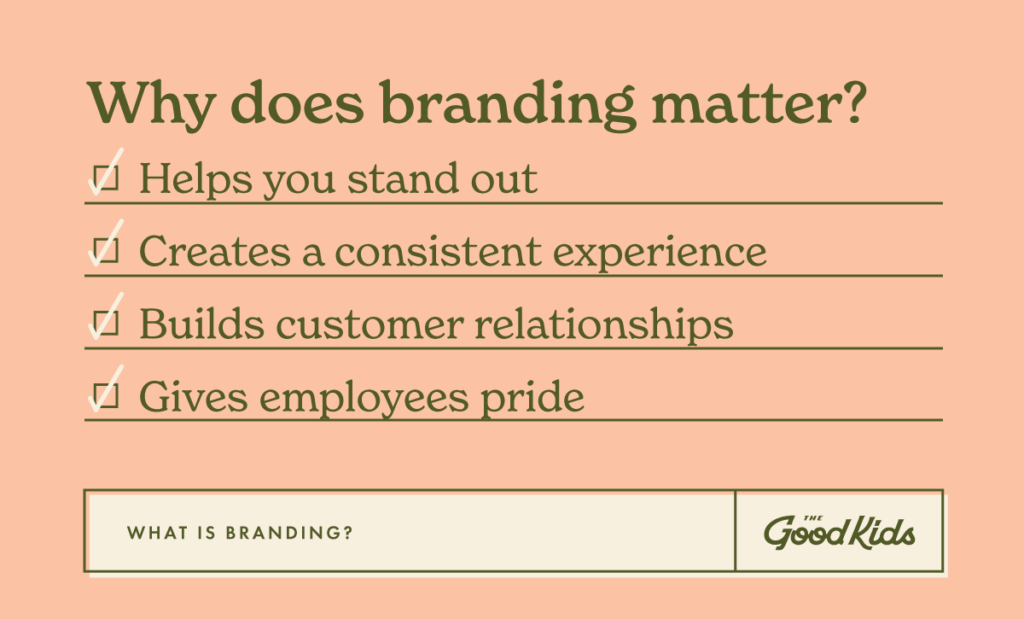
There’s countless benefits to having a brand, but the word ‘brand’ has taken on different meanings over time causing mass confusion so today we want to get to the bottom of it and clarify the difference between a brand, brand strategy, brand identity, and branding.
Let’s do this!
A Brief History of Branding
The word ‘brand’ has meant different things to different generations. ‘Brand’ was first created in Ancient Norse, a Scandinavian language, meaning ‘to burn’ as a brand was a burning piece of wood. Fast forward to the 1500’s, it became common for ranchers to ‘brand’ their cattle to show ownership. The brand was a distinct mark or icon, unique to the owner, to show differentiation similar to a logo today.
Then came the Industrial Revolution in the 1750’s-1870’s that transformed the manufacturing process. Suddenly goods could be created faster and cheaper, which meant more products were created, expanding the consumer’s choices. Every industry had more competitors than ever before introducing the need to stand out, and that’s only continued to where we are today. Today, the word Brand has evolved to mean much more than a mark burned, printed, or shown.
What is a brand?
Put simply, a brand is the reputation that you or your product have built over time. But unlike what it meant in the 1500’s, a brand isn’t simply the name of your product, it’s all of the intangible qualities that represent your business. It’s the feeling they have when visiting your shop, and how they talk about you to their friends when you’re not around.
Here’s some other definitions we find helpful:
- “A person has a soul. A product (or person) has a brand.” —Jennifer Kinon
- “Brand is a collection of perceptions in the mind of the consumer.” —Paul Feldwick
- “A brand is essentially a container for a customer’s complete experience with the product and company.” —Sergio Zyman
And because a brand is simply a reputation, that means each of us has a brand whether we realize it or not. You can have a personal brand for yourself (from social media influencers and artists all the way to lawyers and presidents anyone can build a personal brand) or you can have a brand for your business.
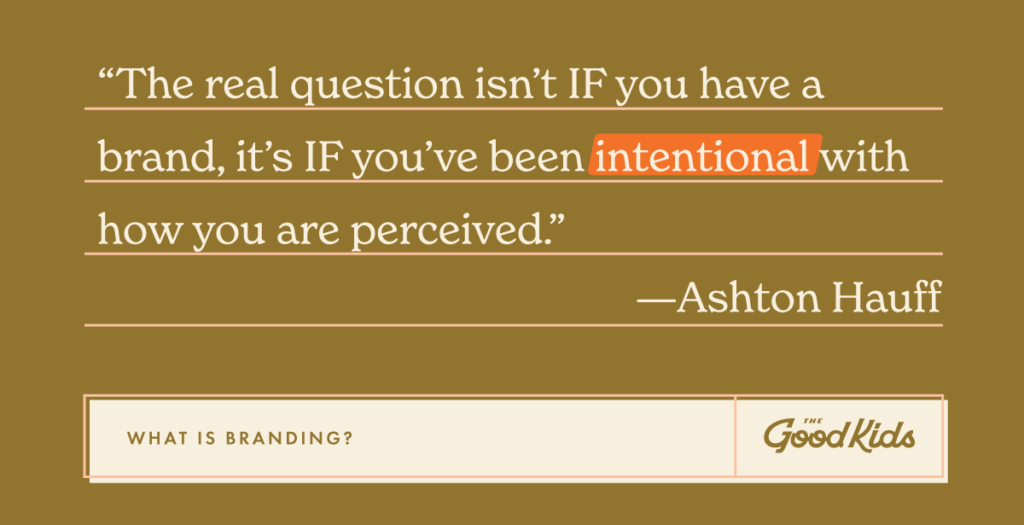
The real question isn’t IF you have a brand, it’s IF you’ve been intentional with how you’re perceived.
Which leads me to our next definition…
Introducing Brand Strategy
This is the part a lot of businesses tend to skip over, but it’s the best thing any business (new or old) can do to set themselves up for long-term success. A brand strategy is a proactive game plan for how you can use your brand to stand out from your competitors.
A good brand strategy defines these key things:
- Who you are (mission)
- What you stand for (values)
- Where you’re going (vision)
- What makes you different than all the rest (your ‘onliness’)
- Who you serve (target audience)
- What your personality is (archetype)
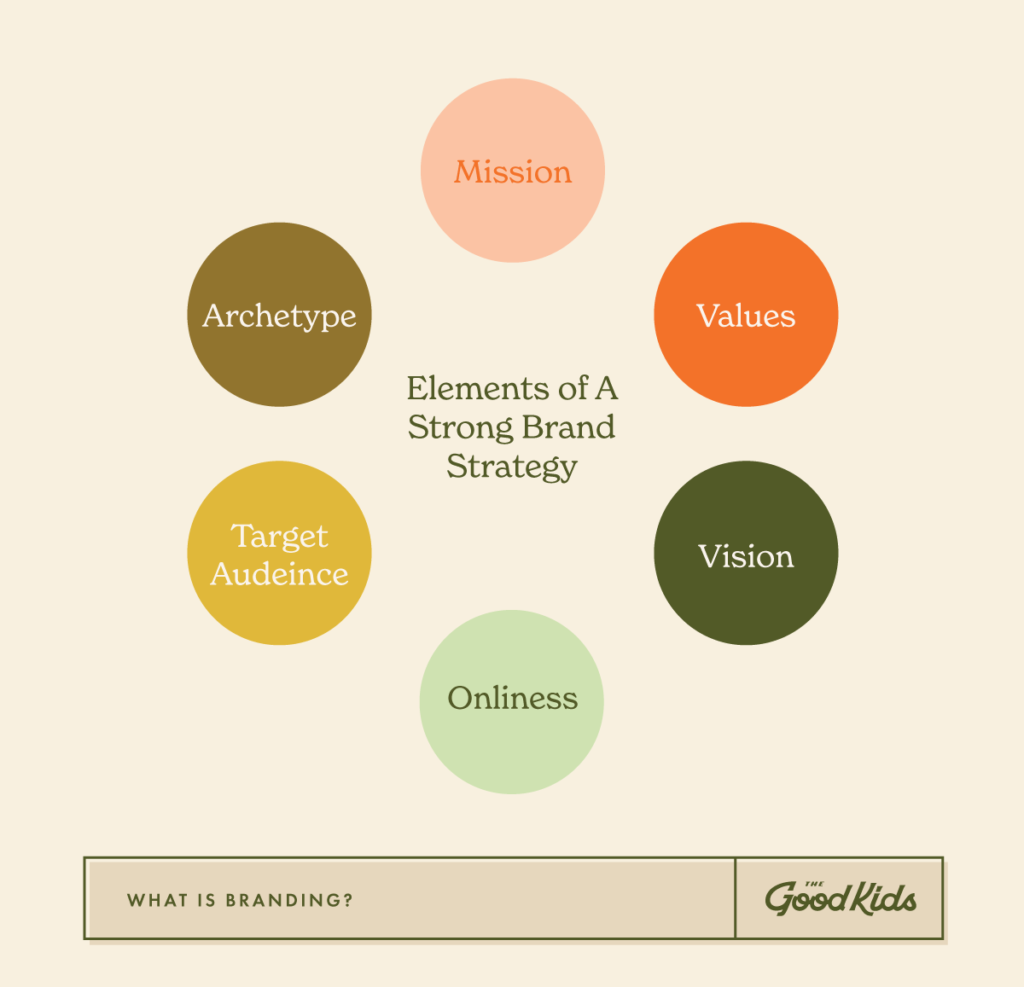
You’ll probably notice a few of these overlap with your standard business plan; however while a business plan is focused on how to make money, a brand strategy is focused on growing your business. Here is the key difference: A brand strategy directly involves your customer because without the customer, you have no brand.
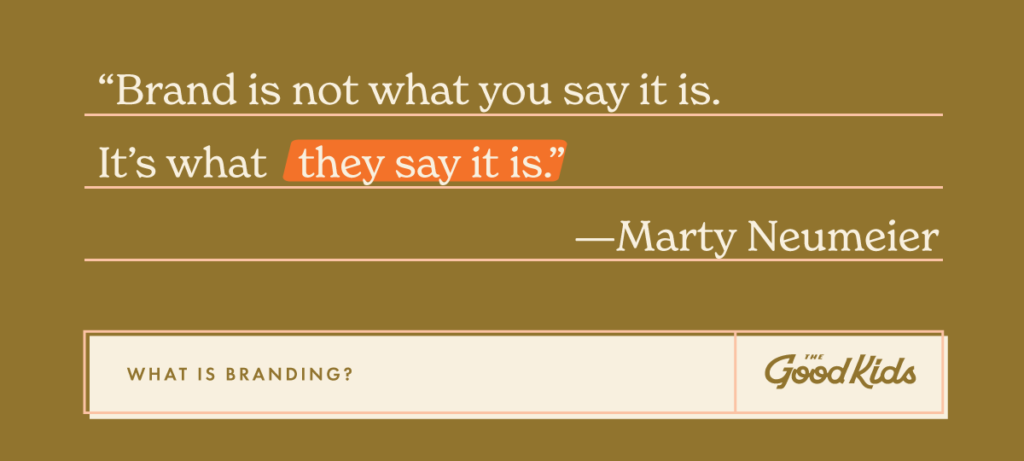
Pro Tip: It is easy to imagine we have a strategy locked away in our head, but if you haven’t written it down, you are at the whim of your memory, your mood, and how busy you become, none of which are well known for their consistency. The benefit of a brand strategy is that you can consistently and quickly describe your product or business to a stranger at a networking event, your grandma at Thanksgiving, your target customer on social media, and even your business partner or staff. Getting on the same page and having a clear message is invaluable because if you can’t do it, how will your customers or employees be able to?
Once your brand strategy is written down, we can move onto how your brand looks.

Brand Identity
While brand is the intangible qualities of your business, the brand identity is the tangible characteristics. The brand identity is both how you look and how you sound.
(OR if we follow the example above, the brand is the soul, and the brand identity is the physical appearance.)
Here’s all the elements in a brand identity:
- Name
- Logo
- Color Scheme
- Typography (Font)
- Imagery (Photography, illustration, etc.)
- Patterns
- Brand Voice (How you talk)
- Tagline
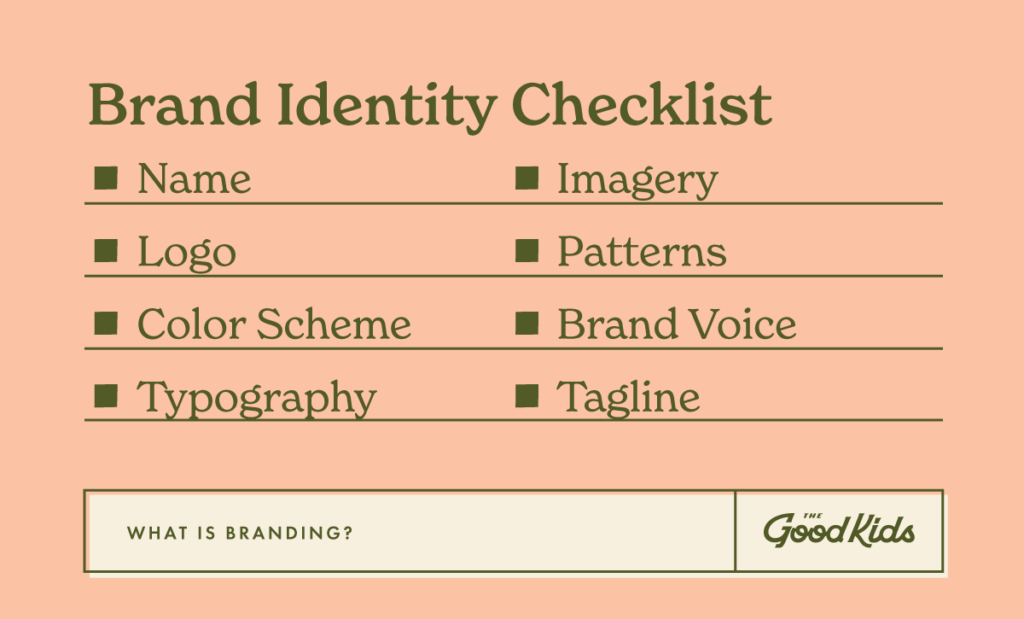
When we start a business or have an idea, it’s so easy to go straight to this step of the branding process because it’s exciting and fun to imagine what it looks like in real life (we totally get it cuz we’re the same way), but without a strategy in place, all of these assets will be created without rhyme or reason and can both delay the design process (costing extra money) and potentially fall totally flat when put up to the test of the market.
How about a real life example, shall we?
Let’s pretend Susie started a new workout gym in her local community. Susie hires a designer to design the brand identity so she can hit the ground running. She gave the designer the name of the gym and some inspiration from other gyms she looks up to.
So the designer creates a rad brand they present to Susie. The business name is designed in red, bold in appearance, and the logo symbol resembles a cheetah to show quickness and strength.
During the presentation meeting, Susie totally hates the brand, but she can’t exactly pinpoint why. She tries to suggest possibly changing the color to blue because that’s her favorite color and maybe using a different animal to represent the business that’s less intense. So the designer makes the changes, shows Susie, only to find themselves back at the drawing board repeating the process without finding a solution that feels just right.
The deadlines get extended, but eventually a new brand is ready to launch that she’s super excited about. She gets all of the visuals from her designer, excitedly shares them on social media right away, and starts selling her product only to find little to no return on her investment as the year goes on, and to see the gym across the street continue to grow.
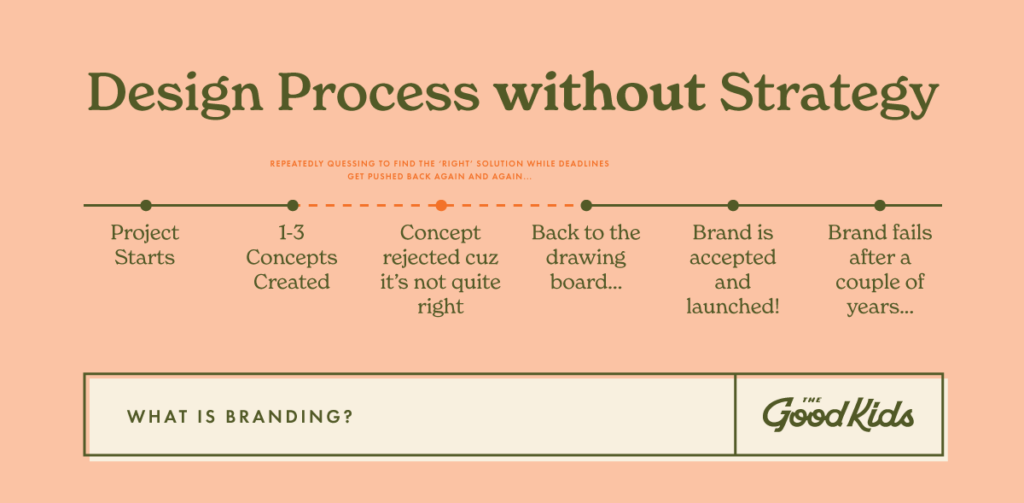
Now, what if I told you their mission is to empower every mother’s mental and emotional health…
That their target audience is busy mom’s in their 30-40’s looking to get away from the house and invest in their self care…
AND the reason they’re different from the gym across the street is that they offer free child care for all ongoing members…
That changes things doesn’t it?
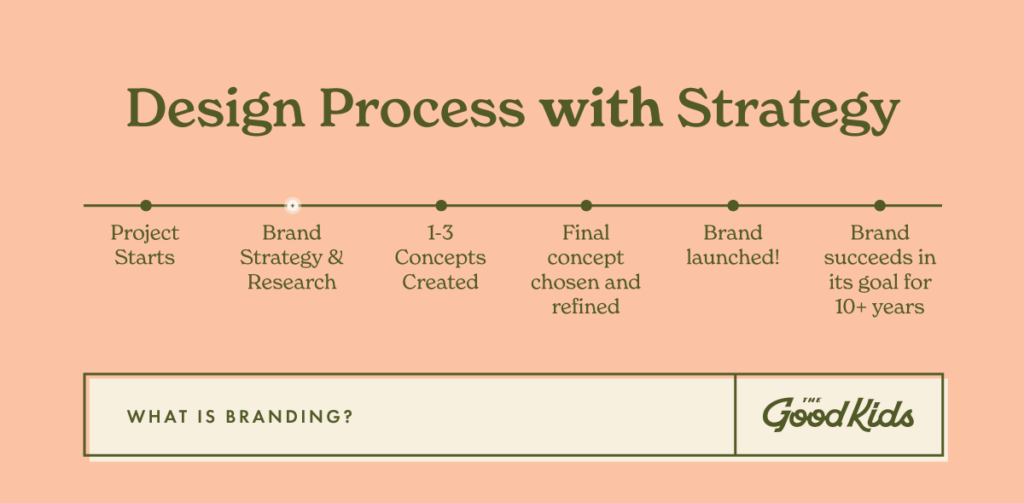
You see, a brand identity can only be as smart as the strategy. If there’s no strategy, decisions are made blindly without any direction, BUT when the strategy collides with a brand identity, that’s where we see serious results. Not only do you save time (and money) during the design process, you also get actual results that last for years and years to come.
So, then what is branding?
Branding is simply the process of establishing what your brand is. So when you’re going through the process of developing your brand strategy or working on creating your brand identity, you’re branding. Simple as that!
Pro Tip: Once both the brand strategy and identity are defined, it’s common and very helpful to have a Brand Guidelines booklet that shares exactly how to and how not to use the brand so that everything is consistent moving forward. From your design team to your support staff, your brand will look and feel as one.
Now you’re all set!
See, not as complicated as you thought, right? To help you get started with your branding efforts, we’ve created the Ultimate Branding Checklist!
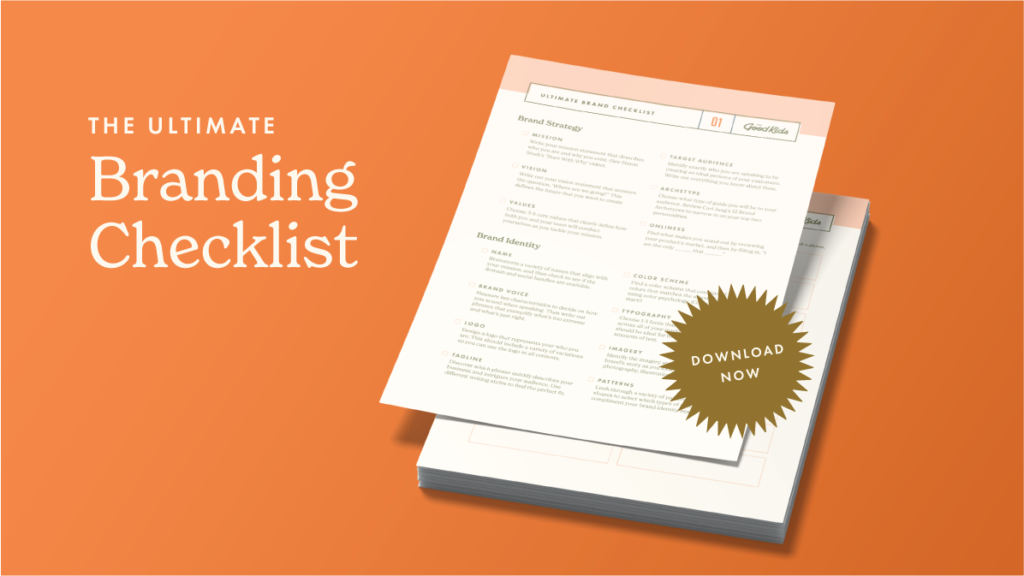
Now that you’ve seen all the individual pieces of the puzzle, we hope it gives you confidence no matter where you are in the branding process… because good branding never stops! Even the best brands of the world are constantly measuring, pivoting, and continuing to improve so their brand connects with their audience and helps the business grow.
…And we’d love to help you do just that
